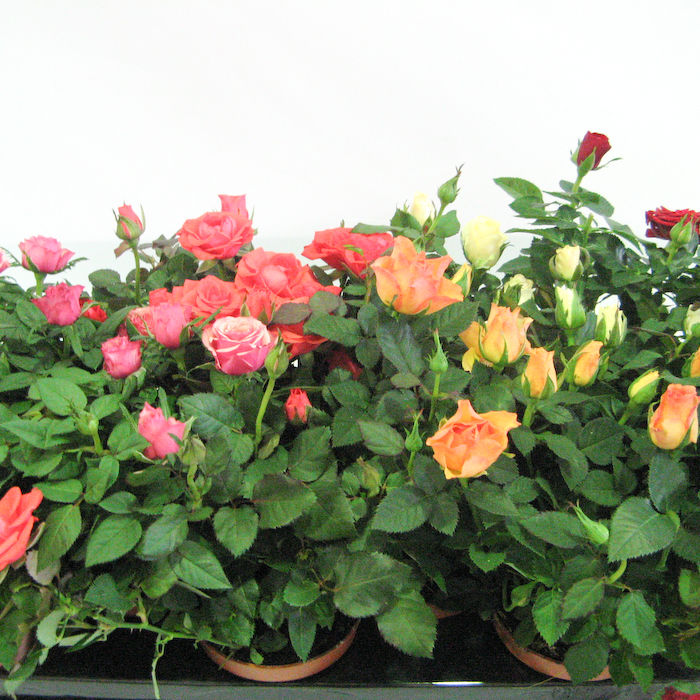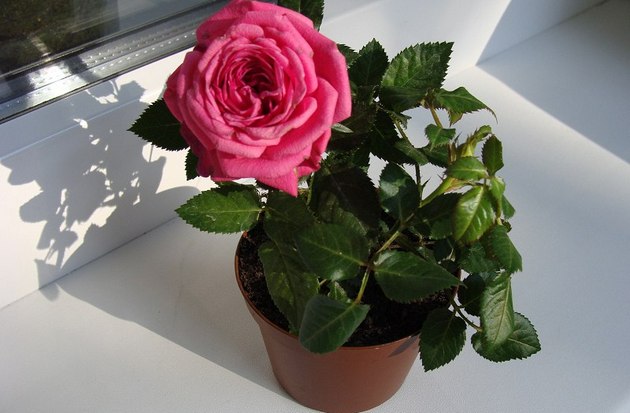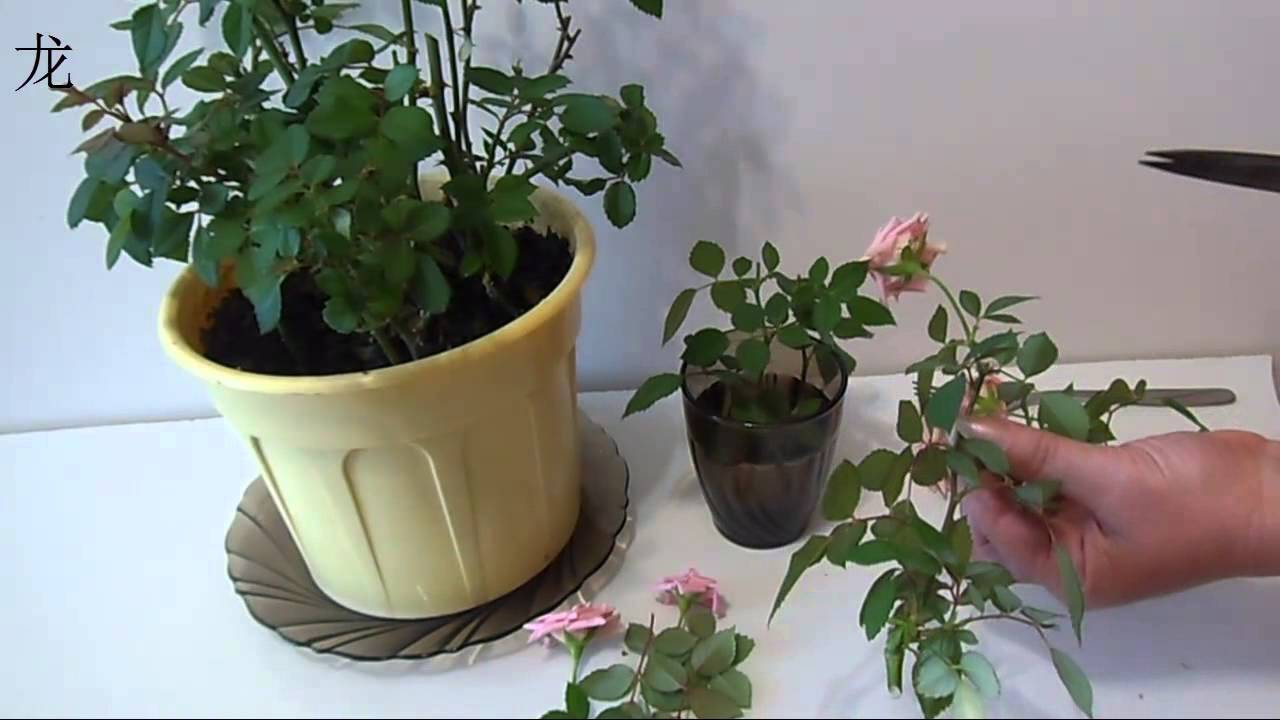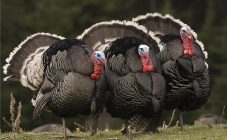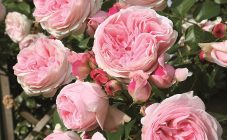Content:
Domestic rose is a variety of flowers belonging to the Rosaceae family. This plant is usually planted in a pot. the maximum height that it reaches is only 45-50 centimeters. It has small dense buds with a diameter of no more than 5-7 centimeters, and in itself looks like a small tree in a pot.
Further in the article, the description and characteristics of the varieties and varieties of the home rose, useful properties, planting features and cultivation techniques will be considered.
Beneficial features
The benefit of this houseplant is in the essential oils that it releases into the air. These oils have a harmonious and stimulating effect on the nervous and immune systems.
A home rose is a rather capricious flower that requires meticulous care and attention. Today, about a hundred different varieties and species are known.
Origin story
These flowers began to be grown in ancient Rome. Despite the fact that in those days the main purpose of the gardens was to grow useful crops: fruit trees, berries, etc., there were also attempts to grow a rose bush. For this, the flowers were transplanted into a large flowerpot and brought into the premises. Home rose is a mix of other types of roses, that is, this species is artificially bred. This can be seen from its small stature, tiny buds and leaves.
Her flowers are rather small, decorative, with a light aroma. The height of the plant is no more than 45-50 centimeters, and the diameter of the bush is less than 30 centimeters. The leaves are as small as the buds, bright green or dark green in color. The stems are resilient and prickly. There are certain types of home roses, divided into the following varieties:
- Polyanthus;
- Repaired;
- Bengali.
Indoor rose is a self-pollinating flower. The color scheme is very diverse, but most often rose lovers tend to choose bushes with red or yellow buds.
Varieties and brief characteristics
Today you can count a huge number of different varieties of home roses, each of which has its own characteristics and care. The species are very diverse and numerous:
- Home bush rose is a versatile version of a long blooming and eye-pleasing rose. She is petite and neat, does not take up much space and does not require any special way of maintenance and care;
- Rosa Beaumond, on the other hand, has its own optimal growth temperature - from +14 to + 20 ° C. This temperature should be maintained from spring to autumn. Winter for the Beaumond rose is a period of calm, so at this time the temperature drops to + 5-8 ° C. This rose needs frequent watering, but it should not be poured either, otherwise it may rot. For extra care, this rose variety can be sprayed twice a day, starting from the bottom leaves, and fed with various fertilizers. Despite the fact that this rose is a home flower, it should be checked for pests;
- Rosa Favorite - home care is the same as for rose Beaumont. Favorite rose buds have a delicate salmon pink color. The standard size of the bush is 50 centimeters. The variety has no aroma. As for the shoots, at first they have a reddish tint, then they become dark green in color;
- One of the most popular varieties is Iceberg. The buds themselves are collected in inflorescences, 3-8 flowers each, 6-8 centimeters in diameter. The peculiarity of this variety is that it has a pure white color, with a light aroma;
- Orange Morsdag - has bright scarlet-red buds. The variety is invariably striking for its diminutiveness, because its flowers are no more than 4-5 centimeters in diameter. The peculiarity is that it color is almost continuous, throughout the spring, summer and until late autumn. It has a significant drawback when leaving - from the slightest excess of water, Morsdag quickly decays.
How to care for a home rose? It is worth disassembling everything in stages, starting with the purchase of a flower.
Purchase. What you need to pay attention to
It is always worth buying flowers with unopened buds, this will preserve the durability of the bouquet. The same goes for the home rose. Its buds should be dense and not open, without any cobwebs, insects and other pests. If, nevertheless, there are blossoming flowers on the bush, then they can be safely cut off without fear of harming the plant.
Care
Next, the rose needs to be transplanted into another pot, since the purchased rose pot contains soil that is not suitable for further flowering. The diameter of the new container should be 2-3 centimeters larger than the old one. The soil must be nutritious and breathable. The composition of the soil includes ¼ of sand, 1 part of sod and 1 part of humus soil.
In order to form a bush, it must be properly cut, remove unnecessary dry and yellow leaves, without waiting until they begin to fall off the stem. For the flowering to be lush, you need to cut the flowers to the first leaf, and also eradicate weak shoots. The chances that they will grow are very small, but they will take on water and fertilizers. There is no need to leave more than 4-5 buds on the shoot. Before wintering, the rose can be shortened to a height of 10 centimeters.
This flower loves light, but the air temperature should be kept acceptable, since overheating provokes the wilting of the flower. In summer, it is 20-25 ° C, and in winter about 10-15 ° C, while if a rose blooms outside, then it should be brought indoors so that the plant does not freeze and calmly endure the rest period.
Humid air is preferable, otherwise, when growing in a dry room, the flower has a chance to pick up pests. As for spraying, if a pet blooms in cool air, then you can do without spraying. There is no need to dust off the rose, as with ordinary houseplants - wiping with a damp cloth. This can damage its leaves and buds, due to its small size. It is enough to arrange a light shower from a spray bottle for the rose and thus wash off the dust.
The plant is also fed from spring to summer, once every two weeks. Diseased plants cannot be fertilized, as the disease will begin to creep even more along the plant.
Reproduction takes place using cuttings. They should be cut from the shoot and placed in the water. The cuttings should be about 3 millimeters thick and 1-15 centimeters long. The temperature must be kept to at least 20 ° C. After about three weeks, the cuttings will begin to put down thin roots, they are planted with the same amount and type of soil that was used for the first transplant.
Home rose pests
As for pests, spider mites and powdery mildew are the main enemies for a home rose. Preparations from the category of fungicides will help to cope with them.
What causes diseases and pests to appear? Most often this is improper care - poor ventilation of the room or high humidity.
Home rose is a wonderful decoration of the windowsill of an apartment or summer house. The main thing is to observe the required air temperature and soil moisture, as well as to protect it from pests and diseases, then it will delight with abundant flowering.
